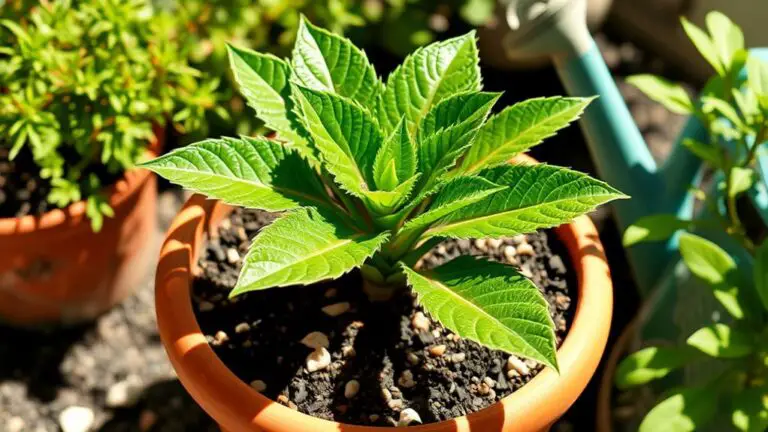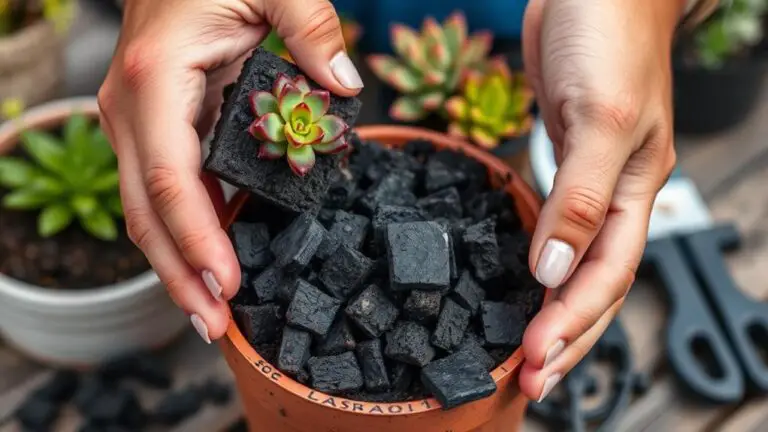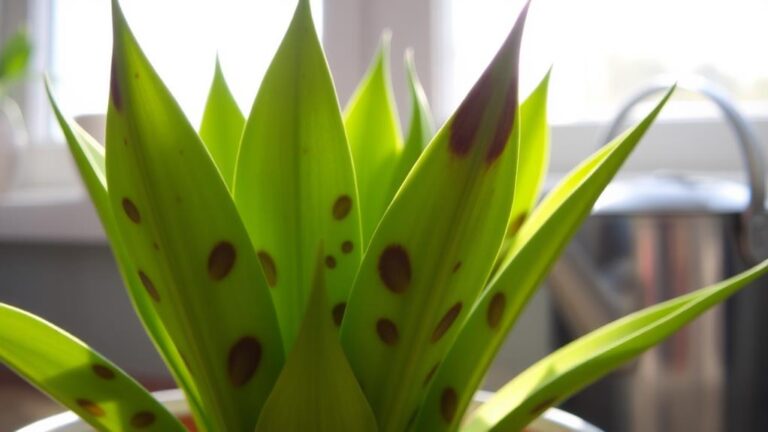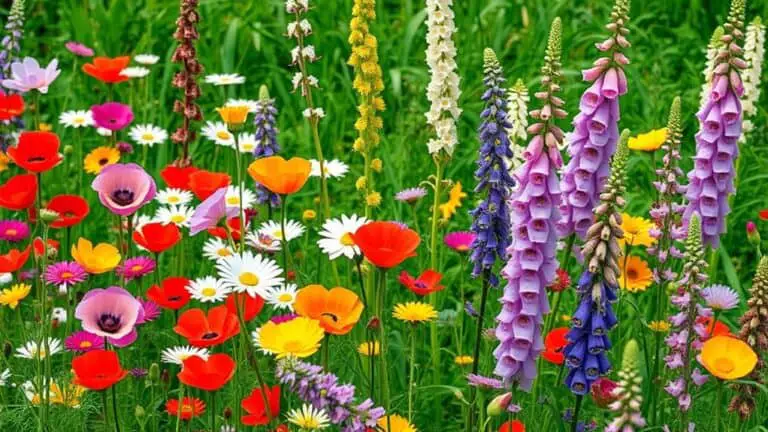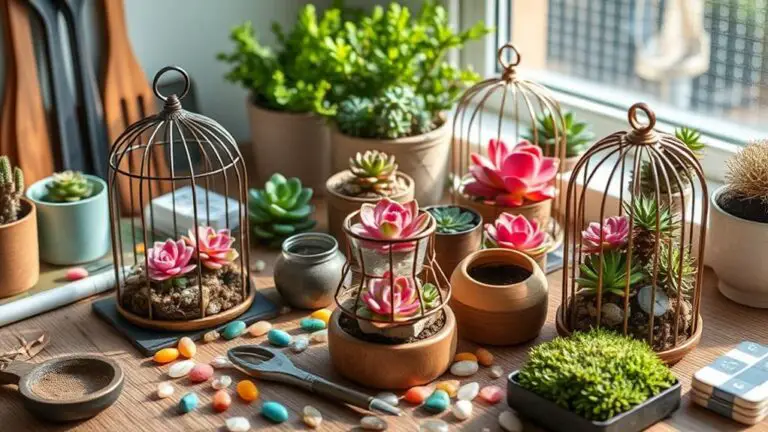5 Essential Steps to Care for Dormant Succulents in Winter
When winter rolls around, your succulents need a shift in care to thrive during their dormant period. You might wonder how to adjust your routine to guarantee their health. Start by reducing watering frequency and letting the soil dry out completely every two weeks to avoid root rot. Next, make sure they get 3-4 hours of indirect sunlight daily, possibly using grow lights. There's more to examine, like avoiding fertilization and keeping an eye on temperature ranges. But perhaps most importantly, do you know the best way to monitor for pests and diseases during this season? Let's explore these steps further.
Reduce Watering Frequency
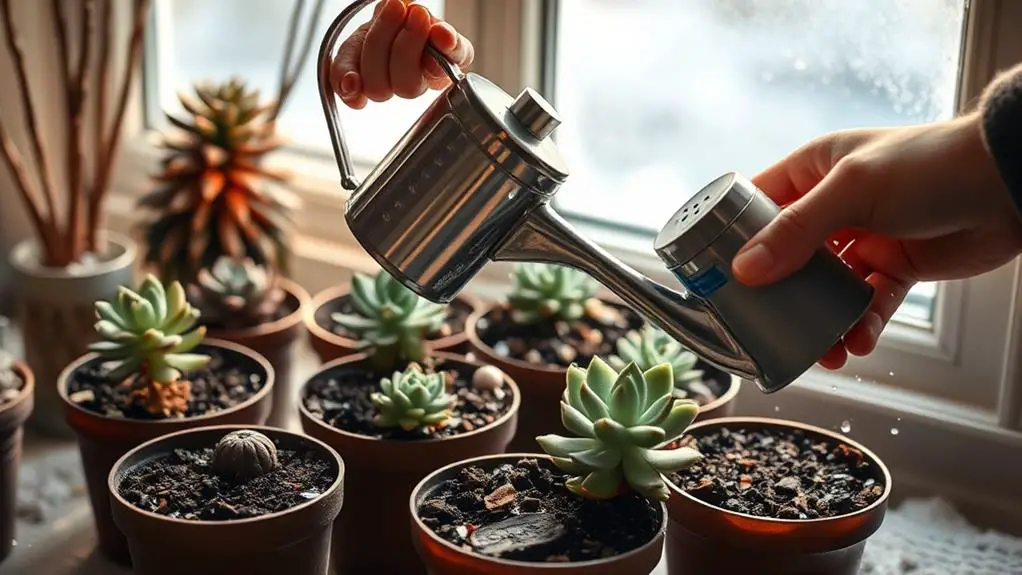
As winter sets in, it's vital to reduce the watering frequency for your succulents. During this dormant period, their metabolic activity slows down, meaning their water needs decrease considerably.
You should typically water them every two weeks or only when the soil is completely dry. Overwatering can lead to root rot, a common issue when succulents' roots sit in moisture for too long.
To check the soil moisture, insert your finger about an inch deep. If it feels dry, it's time to water. If not, hold off a bit longer. Succulents are quite resilient and can tolerate being slightly dehydrated. Look for signs like wrinkled or shriveled leaves, which indicate they need water.
Using well-draining soil is vital during winter. This type of soil allows excess water to escape, preventing the roots from becoming waterlogged.
Succulents thrive in environments where their roots can breathe, so ensuring the soil doesn't retain much moisture is key.
Provide Indirect Light
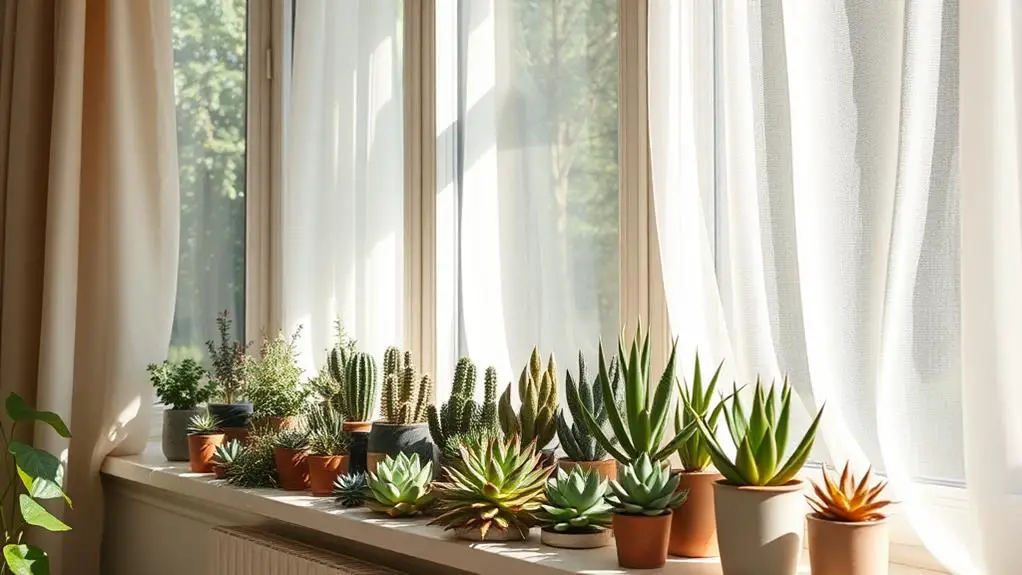
Light is essential for your succulents' well-being even during their dormant phase. In winter, providing 3-4 hours of indirect sunlight daily helps maintain their health without spurring unnecessary growth.
Position your succulents near windows with filtered light, such as through sheer curtains, to shield them from harsh direct sunlight. This prevents leaf burn and keeps your plants safe.
If natural light is scarce, especially during the darker months, consider using artificial grow lights. Place these lights 12-18 inches away from your succulents to guarantee ideal light exposure without causing overheating. This setup mimics the natural light conditions your plants need.
To promote even light distribution, regularly rotate your succulents. This simple step guarantees that all sides receive equal light, preventing uneven growth and encouraging healthy, symmetrical plants.
Winter dormancy doesn't mean your succulents should be neglected; they still require your attention to thrive.
Avoid Fertilization
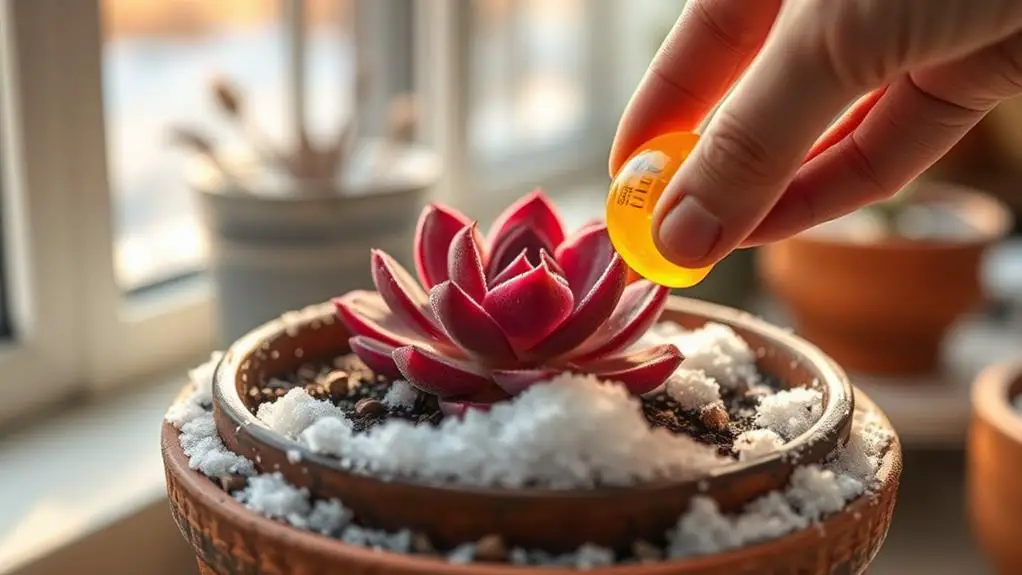
When caring for dormant succulents in winter, it's crucial to avoid fertilization. During this dormant phase, succulents have minimal metabolic activity and are conserving energy.
Fertilizing them now can lead to nutrient buildup in the soil, which isn't good since the plants aren't actively growing. This buildup can actually harm your succulents.
Over-fertilization during dormancy can cause root burn, making your plants stressed and unhealthy. Instead, wait until spring when new growth appears. That's when your succulents will resume their growth and start taking up nutrients again.
Fertilizing them at this point supports ideal health and promotes robust growth.
Remember, the key here is patience. During winter, your succulents don't need the extra nutrients because they aren't using them.
Monitor Temperatures

Keeping an eye on the temperature is key when caring for dormant succulents in winter. Dormant succulents thrive in environments ranging from 40°F to 85°F. For outdoor succulents, you need to protect them from freezing temperatures. Use insulation like mulch or cover them with frost cloths when necessary to keep them safe.
Indoor succulents may not enter their dormancy phase if temperatures consistently stay above 60°F. Adjusting your thermostat can help mimic their natural conditions. By doing so, you guarantee they get the rest they need.
Sudden temperature fluctuations can stress dormant succulents, making it important to place them in stable areas away from drafts and heaters. These fluctuations can prevent a healthy recovery once dormancy ends. Regularly monitoring temperatures guarantees your succulents remain within their preferred range.
For effective succulent care, you should also check temperatures frequently. This practice helps you catch any issues early, guaranteeing your plants stay healthy.
Inspect for Pests and Diseases
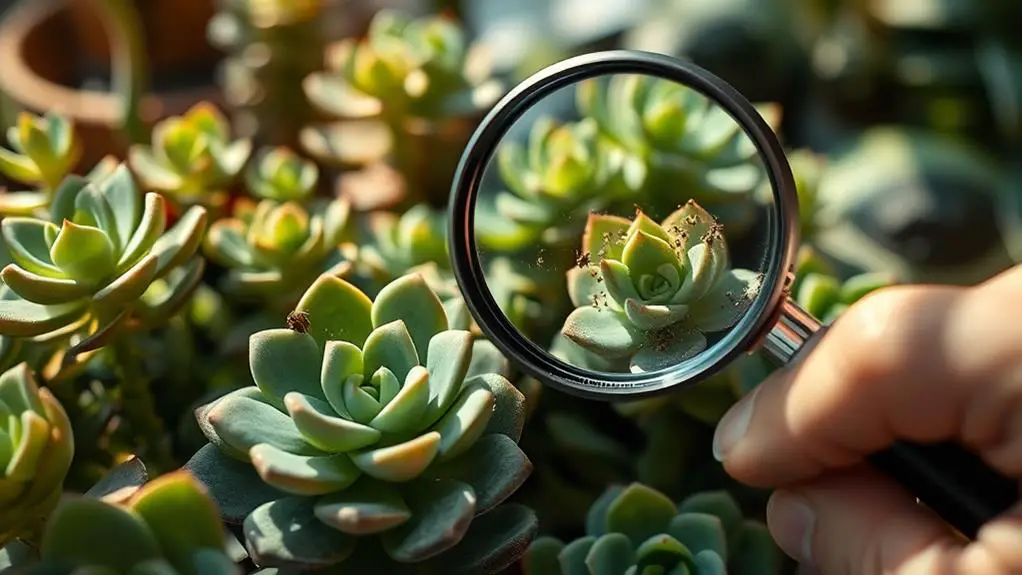
Vigilance is essential when inspecting dormant succulents for pests and diseases in winter. Regularly inspect for pests, like spider mites, which leave webbing, or aphids, which create sticky residue. These pests can thrive indoors during winter, so it's important to stay alert.
Check the undersides of leaves and in crevices for mealybugs and scale insects. These pests can be small and hard to spot but can cause a lot of damage if not treated. Use a magnifying glass to examine your plants closely. Look for any signs of growth or unusual changes.
Watch out for fungal infections, which can appear as mold or discoloration on leaves. These infections often result from excess moisture during the dormant period. Make sure your succulents aren't sitting in water and that the soil is well-drained.
If you find pests or diseases, treat your plants promptly. Use insecticidal soap or neem oil to address infestations. These treatments can prevent further damage and help your plants stay healthy.
Frequently Asked Questions
How to Take Care of Succulents in the Winter?
To care for succulents in winter, water every two weeks, give 3-4 hours of indirect sunlight daily, avoid fertilizing, keep temperatures between 40-85°F, and use well-draining soil. Don't re-pot them during this time.
Do Outdoor Succulents Go Dormant in Winter?
Yes, outdoor succulents like Echeveria, Crassula, and Kalanchoe go dormant in winter. They stop growing, shed leaves, and might change color. Hardy types like sedums and Sempervivums tolerate freezing temperatures without needing extra water.
How Long Can Succulents Go Without Water in Winter?
In winter, succulents can go without water for 2-3 weeks. Their metabolic activity slows down, so only water them every 2-4 weeks when the soil is completely dry to prevent root rot.
How Do You Overwinter Potted Succulents?
To overwinter potted succulents, move them indoors before it gets too cold. Place them in indirect sunlight for a few hours daily. Water sparingly, keep them between 40-85°F, and avoid fertilizing until spring.
Conclusion
You've got this! By reducing watering, giving enough indirect light, avoiding fertilization, monitoring temperatures, and checking for pests, you'll keep your succulents happy through winter. Remember, they're tough plants and can thrive with a bit of care. Don't worry if things aren't perfect; every gardener learns along the way. Trust your instincts, stay attentive, and you'll do great. Your succulents will thank you with vibrant growth once spring arrives! Keep up the good work!


